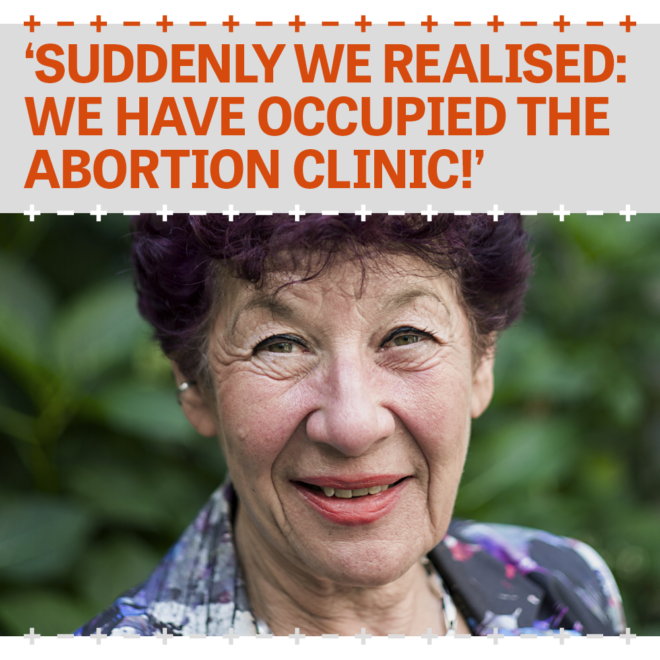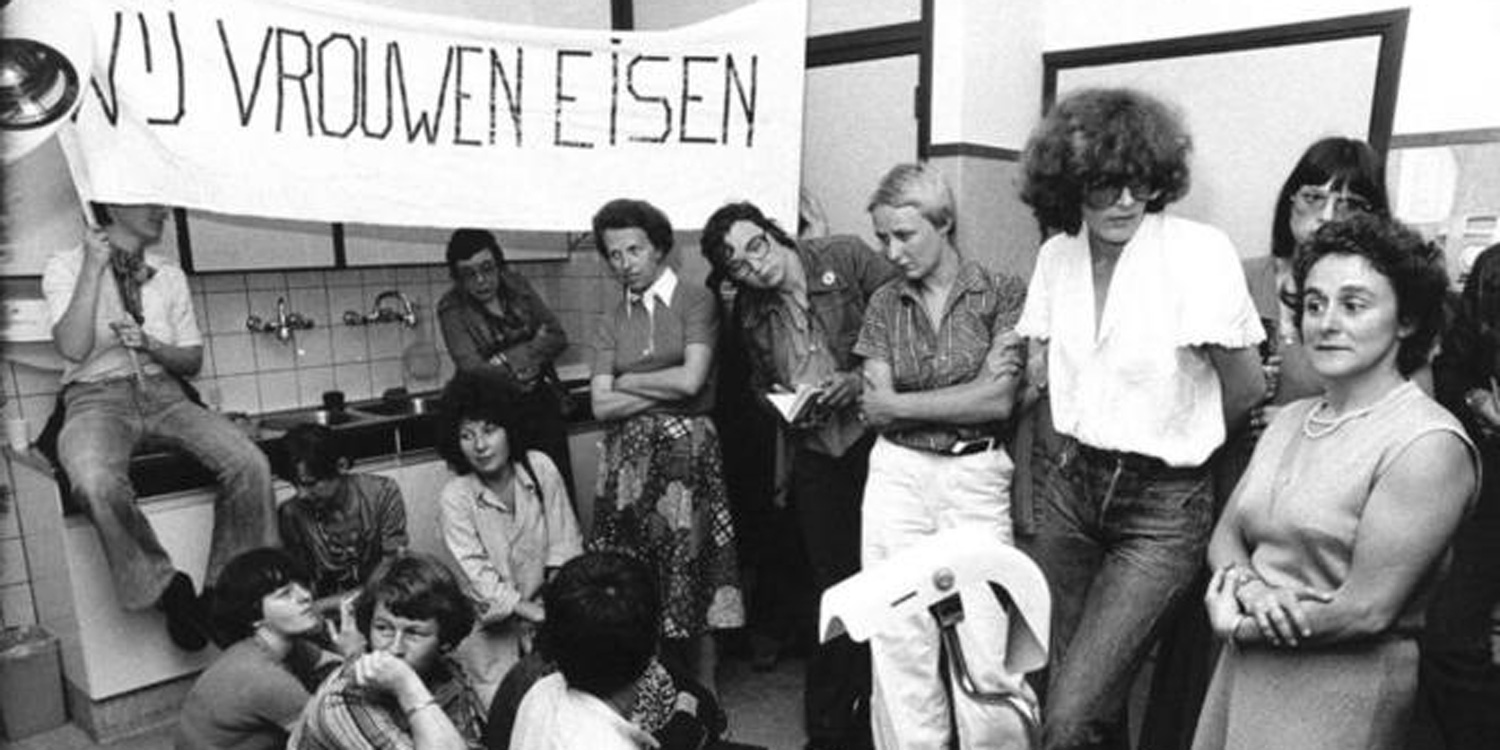Marjan Sax (1947), the Netherlands, Heemstede, 18 July 1976
“We had just started dinner when the phone rang. ‘They are going to close the Bloemenhove clinic!’ Marie José said. ‘Tonight! At eight!’ I got straight in the car with two others from our commune.
“I had never been to an abortion clinic before. It was some kind of villa with a large driveway. Very impressive. We entered into a large hall with lots of benches, and we thought: what do we do now?
“All of a sudden, a door opened and a row of neatly looking gentlemen walked through the hall. The last one was carrying some sort of toolbox with him. They disappeared through a door on the other side of the lobby. We decided to follow the gentlemen and came in a ward where women were lying in beds: they had had an abortion that day and were now resting.
“The row of gentlemen walked to a room that turned out to be a surgery. The men themselves proved to be a delegation from the Department of Justice, and the purpose of the toolbox was to seal the treatment rooms.
“Suddenly, we knew what we had to do. With our little group, we stood in front of the door of the surgery. ‘Ladies, may we please pass through!’ the prosecutor said. I was in front and felt the heart of the person behind me, beating against my back. Then I heard myself say with a squeaky voice: ‘No!’
“From that moment on, we stopped the men. We stayed in the surgeries until they were gone. It was a strange room, with speculums and such things. On a little radio we listened to the ten o’clock news, which announced: ‘This evening, the Bloemenhove Clinic has been occupied by protesting women.’ That is when we finally realised: we have occupied the clinic!
“That same evening, the prosecutor gave a press conference in a small room at the clinic. I was there. When I realised how serious the situation was and what the influence was of our actions, I got the giggles so terribly that they removed me from the room. It was the emotional release that caused it. And pride.
“We occupied the clinic for two weeks with hundreds of people. People came and went, we slept in turns. It was quite an organisation in which I played some sort of leadership role. I really had to get used to that.
“When the judge decided the clinic could not be closed, we ended the occupation. It was the beginning of the legalisation of abortion in the Netherlands.”
occupation of the Bloemenhove abortion clinic
On 18 July 1976, protesters occupied the Bloemenhove abortion clinic in Heemstede. Minister van Agt, the then Justice Minister and an ardent opponent of abortion, had wanted to close the clinic. In the Bloemenhove clinic, ‘late’ abortions of pregnancies up to twenty weeks were also performed – a thorn in the eye of the Minister. In the Netherlands, abortion was illegal at the time, but it had been ‘tolerated’ for many years.
With the slogans ‘Remove abortion from the penal code!’, ‘Abortion covered by health insurance!’ and ‘The woman decides!’ the feminist movement fought in the 60s, 70s and 80s for the legalisation of abortion, which was finally implemented in 1984.

